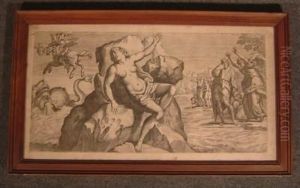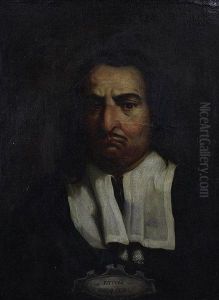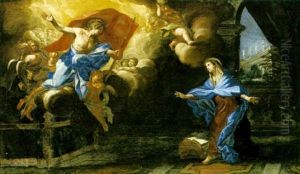Carlo Cesio Paintings
Carlo Cesio was an Italian artist born in 1626 in Antrodoco, a small town in the province of Rieti, in the region of Lazio, Italy. He was a painter, engraver, and architect, known for his works in the Baroque style, which was the dominant style in Europe during his lifetime. Cesio’s contributions to art are often characterized by dramatic expression, deep color, and intense light and shadow contrasts, which are hallmarks of the Baroque movement.
Cesio received his initial training from his uncle, Pietro Paolo Cesio, who was also a painter. He then moved to Rome, where he became a pupil of Pietro da Cortona, one of the leading painters of the Baroque period. Under da Cortona's guidance, Cesio developed his painting skills and began to adopt the grandiose and dynamic style of his master.
During his career, Cesio worked on various projects, including fresco decorations and altarpieces for churches in Rome and other Italian cities. He was also a skilled engraver, producing plates after his own designs as well as after the works of other artists. His engravings are valued for their technical proficiency and for the way they disseminated the Baroque style throughout Europe.
In addition to his painting and engraving, Carlo Cesio is noted for his work as an architect, although this aspect of his career is not as well documented as his visual arts contributions. He was involved in designing and renovating several structures in his native Lazio region.
Carlo Cesio’s works can be found in various churches and collections in Italy, and his engravings continue to be of interest to collectors and art historians. He died in 1686, leaving behind a legacy that had a lasting impact on the development of Baroque art in Italy and beyond. Cesio’s work is emblematic of the era’s artistic tendencies, capturing the energy and grandeur that defined the visual culture of the 17th century.


